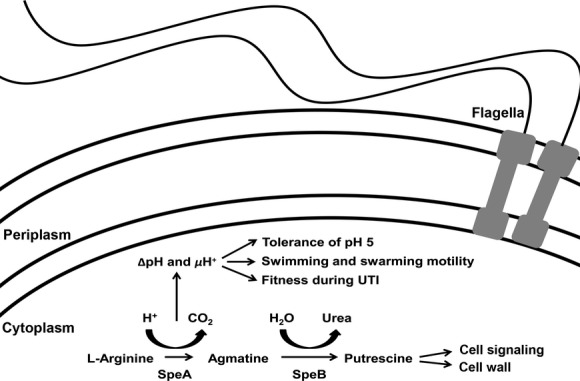Figure 6.

Diagram of the contribution of arginine decarboxylase to motility and fitness. Our results indicate that the arginine decarboxylase reaction has a separate contribution to motility and fitness beyond the role of this enzyme in putrescine biosynthesis and the known contributions of putrescine to swarming motility. Arginine decarboxylase (SpeA) consumes a cytoplasmic proton to produce agmatine, thereby contributing to ΔpH and μH+. Conservation of ΔpH and μH+ contributes to tolerance of mildly acidic conditions and provides fuel for flagellar-mediated motility, such as swimming and swarming, while also contributing to fitness in a mouse model of ascending UTI.
